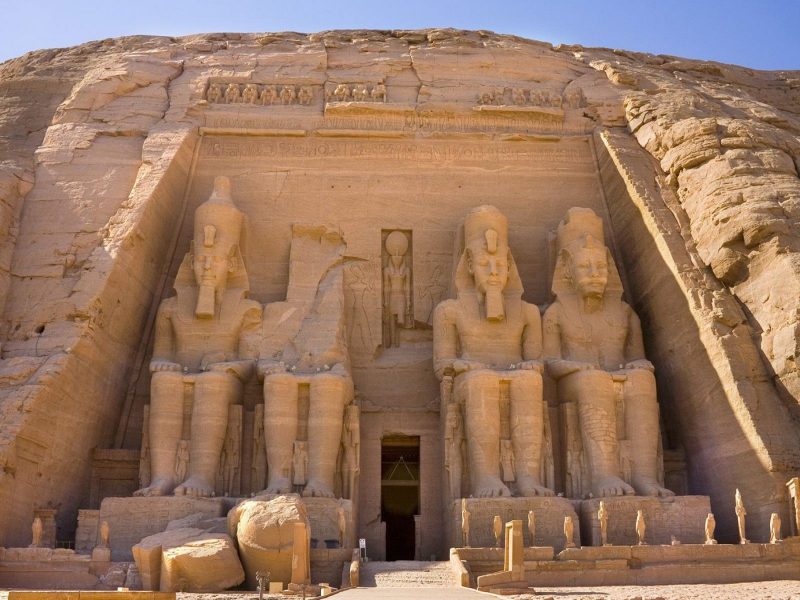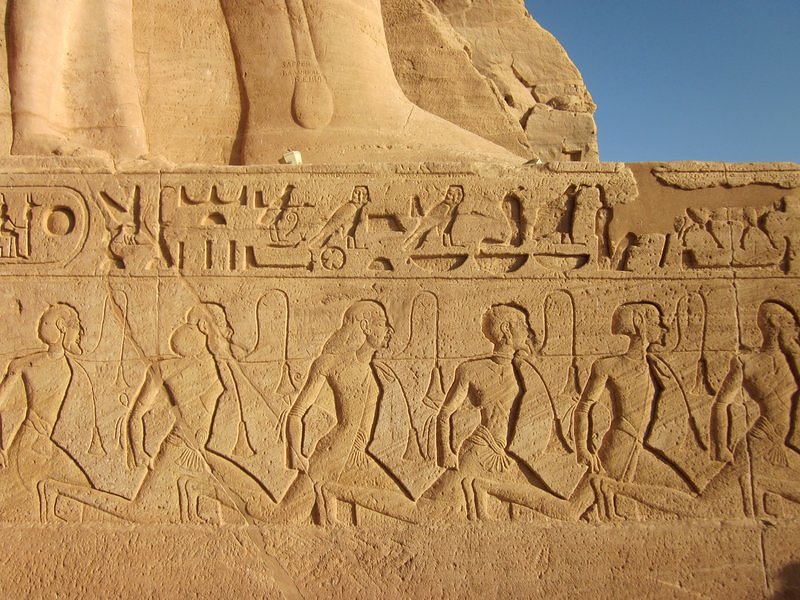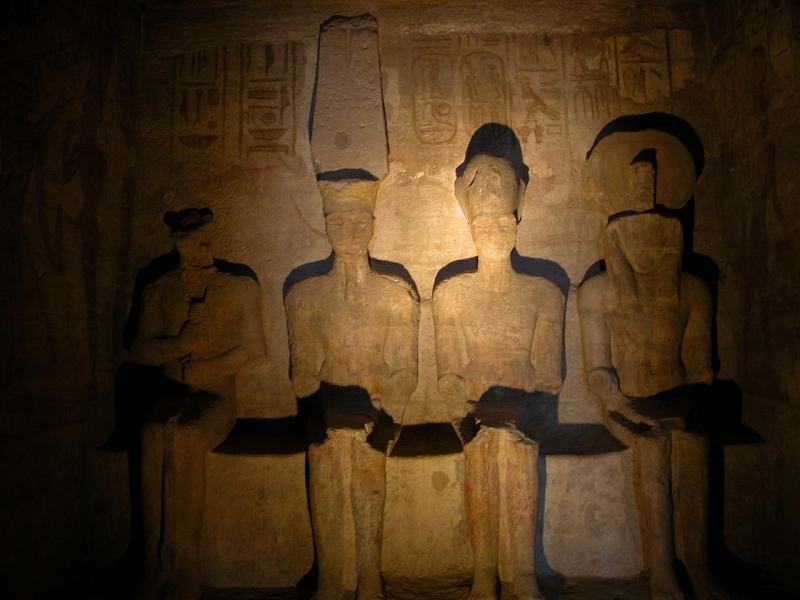Do you know what the most interesting fact about Abu Simbel Temple is?
The Abu Simbel Temples are the:
- Second largest man-made structures.
- One of the most fascinating ancient monuments in Egypt after the fascinating Pyramids of Giza.
- They were built for the most celebrated pharaoh or king of ancient times- Ramses II and his beautiful wife Nefertari.
Moreover, there are two temples at the site- one for the pharaoh Ramses II (The Great Temple) and one for his wife Nefertari (The Small Temple). These temples were built after Ramses II’s victory over Hittites at Battle of Kadesh.
Want to more interesting facts about the Abu Simbel Temples, then find out below:
LOCATION and RELOCATION
Today, the temples are located at an artificial cliff on Lake Nasser (approximately 300kms from Aswan’s High Dam). Originally, the temples were 200kms below the present location in 1969. Aswan High Dam resulted in the discovery of Lake Nasser and to prevent the temples from submerging, the temples were relocated.
Surprisingly, it was UNESCO and Egyptian government who together made this relocating process possible. Teamwork can make everything possible, right? And can you believe that this process took over 60 MILLION DOLLARS!!!! Every bit of the temple was dismantled and then reassembled at the new site. Moreover, there are a lot of videos online that you can watch to believe this relocation project.
TEMPLE OF RAMSES II or THE GREAT TEMPLE
Who was Ramses II? Ramses II was unlike any other pharaoh in the Egyptian history. He was the most influential kings of his reign. However, when I visited the Abu Simbel Temples with my friend, our guide told us that he had over 160 children!!! We were stunned to hear that. But then after hearing stories of other kings as well it became normal, strange right?
Shockingly, the temple was so huge that it made me awe-struck. Its entrance has 4 enormous statues dedicated to Ramses II along with the statues of Ra-Horakhty, Ptah and Amon. Moreover, at their feet were small carvings of Ramses’ children, his queen Nefertari and his mother, Muttuy. We took some pictures of the statues and selfies as well, coz why not?
Also, before actually visiting the Abu Simbel Temples we expected statues of Ramses II but in the first room itself had 8 huge pillars. Four on each side they were representing Ramses II in the form of the god Osiris. The beautiful carvings and images on the walls clearly depict the various victories of the great warrior that Ramses II was.
As we moved further into the temple, there was another room. It has seated statues of all the Kings like outside the temple.
Did You Know? On October 22 and February 22 (the dates of Ramses II coronation/death and birth), the light come through into the temple and light up the three statues of Ramses, Ra-Horakhty and Amon. And I was amazed to hear from our guide that Ptah is placed in such a manner that it never gets light up. Wondering why? It was because he was involved with the underworld and it was a sin for them. This is completely an archaeological mystery, isn’t it?
QUEEN NEFERTARI’S TEMPLE or THE SMALL TEMPLE
As we walked towards the next temple, that is, of course of his queen, we saw humongous four statues of the king and two of his wife Nefertari. The interior of this temple is much simpler than that of King Ramses. There are 6 pillars having depictions of goddess Hathor including various moments from Queen Nefertari’s life.
LOST IN THE SAND
You will not believe me when I say that these huge temples were lost under sand for years. You didn’t believe me, did you?
But these temples were actually lost in the sands and years later it came into the notice of a Swiss explorer, Johann Ludwig Burckhardt in 1813. And then, in the year 1817, his companion Giovanni Belzoni completely uncovered the site. All thanks to this man that today we can see the majestic temples of Abu Simbel.
TEMPLES TODAY
After personally experiencing this UNESCO World Heritage Site, I can definitely say that they are one of a kind! Moreover, it is one of the most magnificent temples I have ever seen. Travelers and tourists from around the world come to visit these temples and bring back some amazing pictures and memories from this trip. I did too! And you can experience and explore the beauty of the place too!
FAQ?
How to Reach: Take a 3 hours 30 mins ride (288kms) from Aswan to Abu Simbel by road. Return to Aswan the same day after witnessing the temples.
What to Expect: The magnificent Temples of Abu Simbel, Sunset Felucca (boat) Tour at Lake Nasser, some fascinating Egyptian facts.
Weather: The weather is generally hot and dry. So, your travel clothing should be light and comfortable.
What to carry: Sun block, a hat, bring two pair of shoes one for tour walking and one for casual wear, a camera, water bottles as there are no markets around the site.
Currency: Egyptian Pound (EGP)










Leave a Reply
You must be logged in to post a comment.